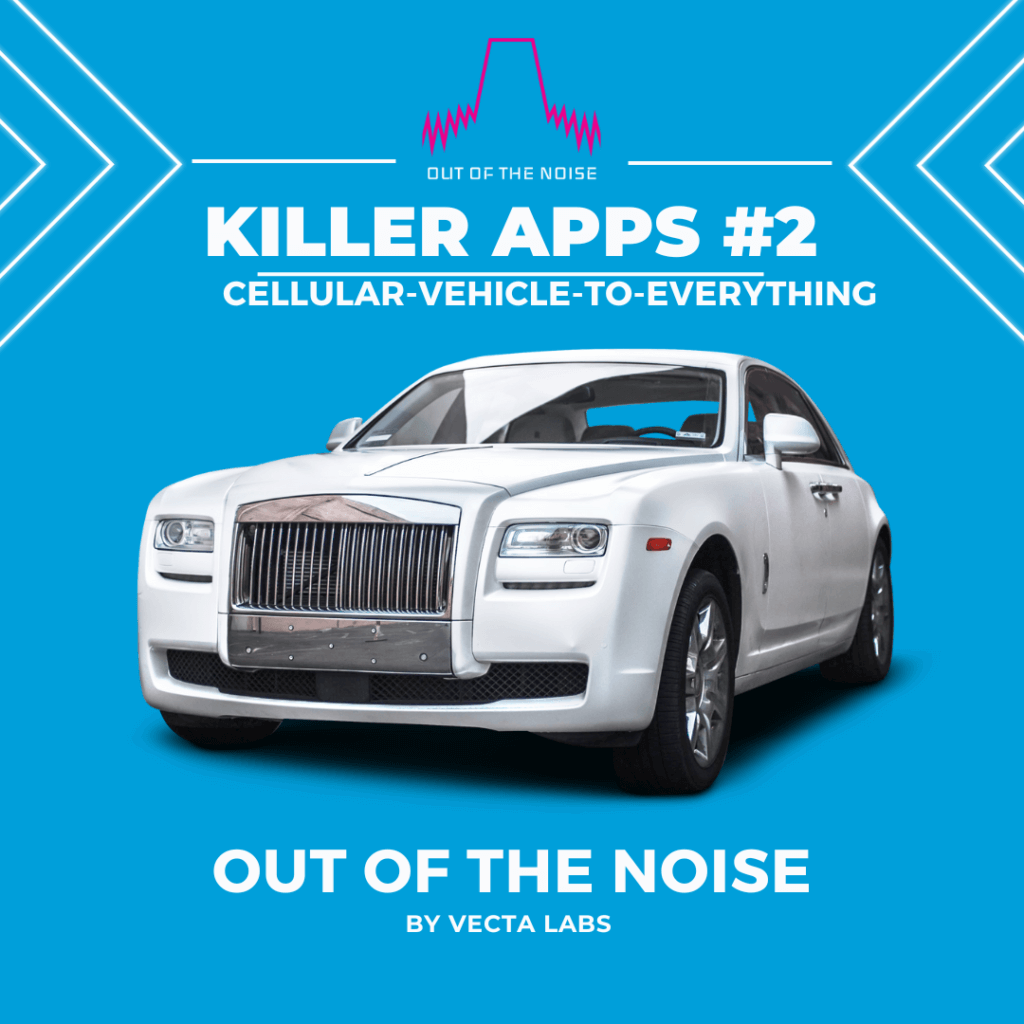Last week, Vecta Labs launched ‘Out of the Noise’ and published the first of a three part series titled, ‘What are the Killer Apps for 5G?’.
In part two of the three part series, we explore the possibility of cellular-vehicle-to-everything connections.
Check it out below:
Anyone who has bought a new car in the last 10 years will have been struck by the sheer amount of technology contained in modern vehicles. This trend is set to accelerate in the next few years with the arrival of 5G NR Cellular Vehicle-to-Everything, or 5G C-V2X.
5G C-V2X is an umbrella term for an emerging family of communications technologies that enable road vehicles to intelligently connect to their surrounding environment. This includes cellular networks (V2N), roadside infrastructure (V2I) and adjacent vehicles (V2V). There is also a strong emphasis on detecting and protecting vulnerable road users like pedestrians and cyclists (V2P) [4].
One proposed use case for 5G C-V2X is high-density vehicle platooning [5]. This refers to the dynamic formation of groups of vehicles on a road, some of which may be autonomous or semi-autonomous, which travel together in close formation in a coordinated fashion. This offers many advantages, including reduced traffic congestion, lower CO2 emissions and shorter trip times [6].
Another application of 5G C-V2X is intention sharing between vehicles, whereby vehicles broadcast their planned traffic manoeuvres to other road users [7]. Typical examples include changing lanes, merging onto busy roads or turning across busy intersections. Intention sharing helps drivers execute difficult manoeuvres more safely and predictably. This reduction in “cognitive load” also helps mitigate driver stress and fatigue.
Yet another use case for 5G C-V2X is extended sensing. This refers to a vehicle’s use of sensor data collected from external sources to improve its situational awareness beyond what could be perceived with its on-board sensors alone [8]. External data sources include other vehicles, roadside units (RSUs), traffic cameras running object detection algorithms, and pedestrian devices. Extended sensing will enable hazards or obstructions that are beyond the driver’s line of sight to be detected much earlier. It will also enable vehicles to make speed recommendations to their drivers that maximise their chances of getting a green light at the next intersection [9]. Another intriguing idea is a “see-through” mode, whereby a car that is following a large, slow-moving truck can access the dash-cam feed from the truck in order to determine whether it is safe to overtake [7].
If you missed part one of the series, you can read it here.
Please stay tuned for part three.

